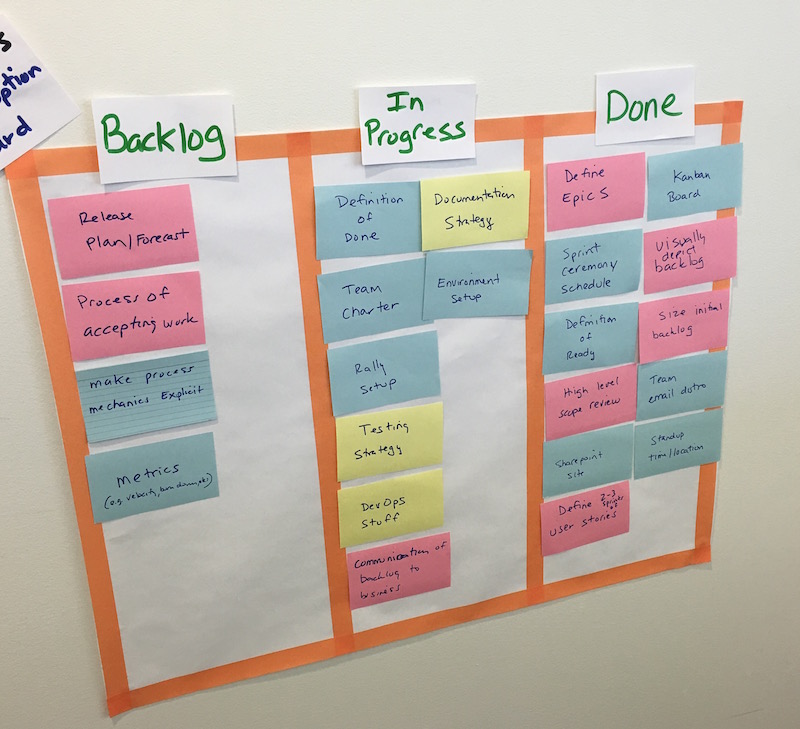A few months ago, I started coaching a team as they began their journey from waterfall to Agile. One technique I employed was an information radiator that I named the Agile Adoption Board. It worked out well, so I wanted to share the idea.
My goals for the simple kanban board (backlog, in progress, done) were to:
- Visualize the key things I knew the team would have to think about during it’s initial transition;
- Provide a place where team members can add their own items (e.g., things they have questions about);
- Provide clarity on what is done and what is not;
- Foster conversation amongst the team; and
- Facilitate discussions between me (coach) and the team’s ScrumMaster
I added three categories of items to the board (team, backlog, and strategic) and used different color 3×5 index cards to help visualize the difference. Here is the list of items:
- Blue Cards (team things)
- Team charter
- Process mechanics explicit
- Definition of done
- Definition of ready
- Rally setup
- Kanban board
- Environment setup
- Sprint meeting schedule
- SharePoint site
- Team email distribution list
- Standup time and location
- Red Cards (backlog related)
- High-level scope review
- Define epics
- Define 2-3 sprints of stories
- Size initial backlog
- Release plan and forecast
- Communication of backlog to business stakeholders
- Visually depict backlog
- Process of accepting work
- Yellow cards (strategy items)
- Testing strategy
- DevOps stuff
- Documentation strategy (what and where docs will live)
To create the board itself I used about a 32″ by 24″ piece of banner paper and orange painter’s tape for the columns. Each column is about 10 inches wide so that two index cards can fit next to each other. I attached it to the wall using Blu-Tack. The paper is awesome because the cards with paper’s tape (or stickies) stick much better to paper than they do to a painted wall.
I set up the board on a wall right next to the team’s work area so they would walk by it every day. Every week or so I would review the board with the team, move things around, and add new items. Typically I did this right after a daily Scrum and it only took about 5 minutes.
The Agile Adoption Board was a simple way to track transition activities that proved very useful to the team, the ScrumMaster, and me as a coach. If you have ideas on how to improve the board or have done similar things with your teams, I’d love to hear from you!
This article was also featured on the member articles section of the Scrum Alliance website.

Leave a comment